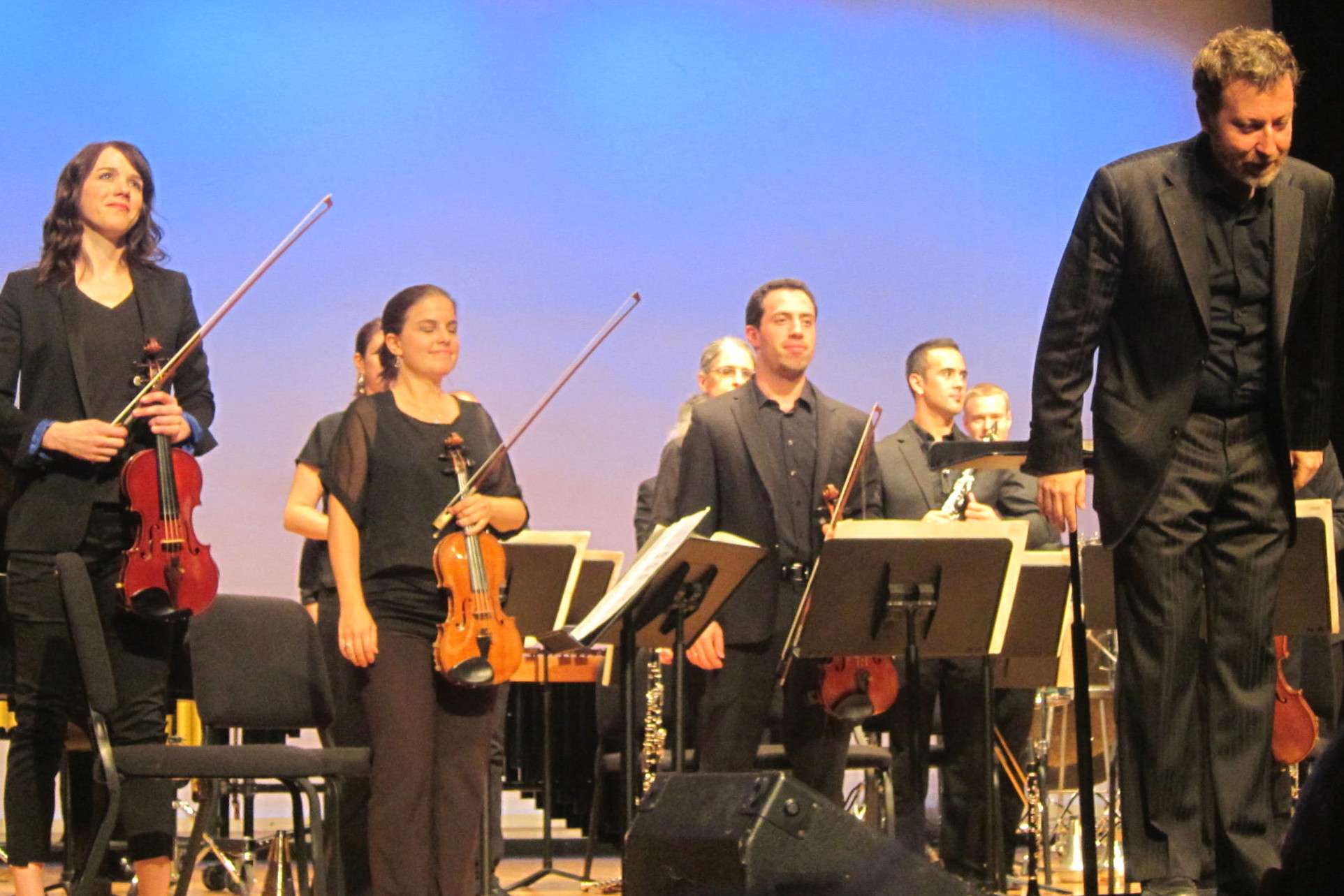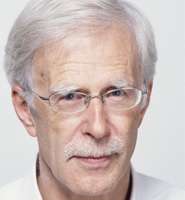|
Back
Stirring Vedas, Vibrating Violins New York
Miller Theater, Columbia University
10/11/2012 -
Composer Portraits
Jonathan Harvey: Death of Light/Light of Death – Bhakti
Ensemble Signal: Paul Coleman (Sound Director), Kelli Kathman (Flute), Jacke LeClair (Oboe), Adrian Sandi (Clarinet), Ken Thomson (Bass clarinet), David Byrd Marrow (Horn), Mike Gurfield (Trumpet), James Hirschfeld (Trombone), Bill Solomon, Doug Perkins (Percussion), Oliver Hagen (Piasno), Nuko Wadden (Harp/gong), Courtney Orlando, Olivia DePrato, Aris Streisfeld (Violins), John Pickford Richards (Viola), Lauren Radnofsky (Cello), Brad Lubman (Conductor)

Ensemble Signal, B. Lubman (© Coco T. Dawg)
When I heard Jonathan Harvey’s Bird Symphony with Plainsong last August, it left me hungry and passionate for far more by this British composer, little known in America. The Columbia University homage t last night presented two works which could hardly compare in sumptuousness and spectacular effects. But both Bhakti and Death of Light/Light of Death gave indication of a rare (if sometimes rarefied) mind delving into mystical cores, mysterious effects.
Mr. Harvey, who celebrates his 75th birthday soon is not mystical in the sense of Scriabin. His electronic sounds are used not as howling aurae, his religious pictures do not soar into the heavens. His music can be fiercely dense and moderately simply. Like that of Messiaen, he is not afraid to offer whole movements in octaves, or to use bells and, yes, electronic sounds to make his points.
The Bird Symphony had the ample resources of the pianist Joanna MacGregor and the International Contemporary Society, as well as real bird and amplified avian sounds. The two pieces last night were more concentrated, more challenging, and thus more satisfying for the largely professional audience at Columbia.
The opening Death of Light/Light of Death was based on an altarpiece of the Crucifixion, with the five main characters as five movements. But this was no Respighi Frescoes or Martinù church window adorations.
The first movement of Jesus on the cross was aural agony. The agony of vibrations from the harp and wailing from the oboe. The penultimate Virgin Mary is not a blessing in purity but a funeral march for oboe and tam-tam, while violin, viola and cello play in high harmonics. For John the Baptist, Mr. Harvey extends one note, a high E that grows into another march.
Death is, in Mr. Harvey’s words, “the ultimate meaning...for those who have eyes to see, a message for all religions and all beliefs and no beliefs.”

J. Harvey (© Faber Music)
It was the sensual words of Hinduism, which made up the twelve movements of the 50-minute Bhakti (a Sanskrit word meaning utter devotion). The program notes by the incomparable Paul Griffiths, goes technically into the composition, which takes in all the instruments of the great Ensemble Signal, as well as electronic sounds when necessary.
Each movement, though, had its own character. Energy, humor (cosmic humor!), agony, dance, were given, sometimes with contrapuntal virtuosity, sometimes with the resounding bells, sometimes with quartet-tones close to the Indian art which inspired the music.
It was all clever, heartfelt, played by one of the great ensembles of our day under Brad Lubman. But–and a very important “but”–Mr. Harvey had based each movement on a fairly extended reading from the Vedas The poetry is beautiful, the individual thoughts dealing with each movement dealt with infinite space, with “gods making the melodies into shuttles for weaving”, “the dark hands dancing in the meadows...”
Quoting each would take too much space for this piece. Yet I cannot think how much each of these cryptic movements could have had another dimension if a narrator had read these words before each movement.
Is this a Philistine thought? Shouldn’t music speak for itself? Probably. Yet Mr. Harvey was not averse to appending the words to each movement, and thinking back on the music, I felt that these emotions, these ancient feelings, could have enhanced these complex wonderful structures closer to (in the words of Mr. Harvey’s Vedas, “the waters, bottomlessly deep” or the “realm of space, the sky which is beyond.”
Harry Rolnick
|